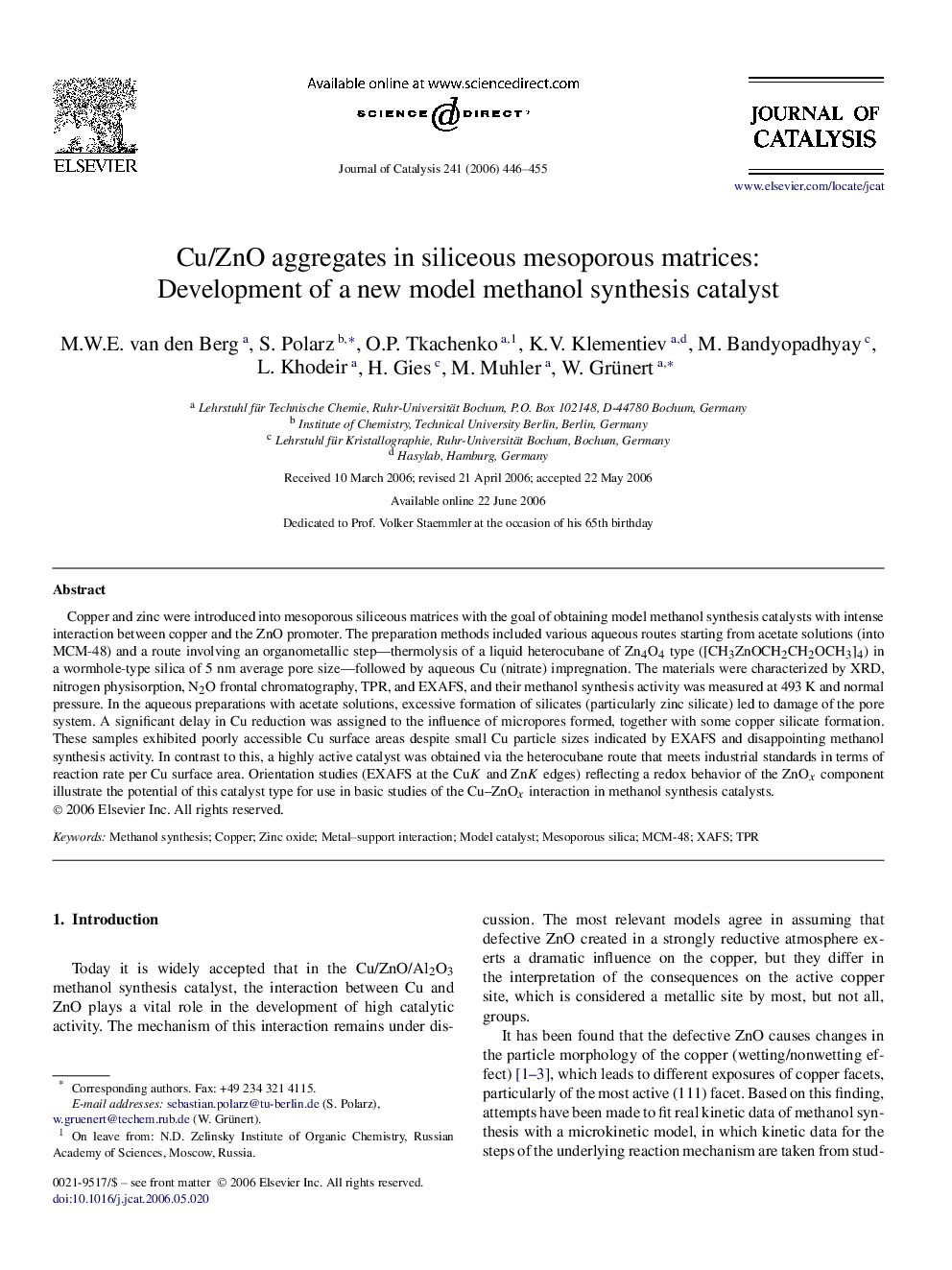| Article ID | Journal | Published Year | Pages | File Type |
|---|---|---|---|---|
| 63115 | Journal of Catalysis | 2006 | 10 Pages |
Copper and zinc were introduced into mesoporous siliceous matrices with the goal of obtaining model methanol synthesis catalysts with intense interaction between copper and the ZnO promoter. The preparation methods included various aqueous routes starting from acetate solutions (into MCM-48) and a route involving an organometallic step—thermolysis of a liquid heterocubane of Zn4O4 type ([CH3ZnOCH2CH2OCH3]4) in a wormhole-type silica of 5 nm average pore size—followed by aqueous Cu (nitrate) impregnation. The materials were characterized by XRD, nitrogen physisorption, N2O frontal chromatography, TPR, and EXAFS, and their methanol synthesis activity was measured at 493 K and normal pressure. In the aqueous preparations with acetate solutions, excessive formation of silicates (particularly zinc silicate) led to damage of the pore system. A significant delay in Cu reduction was assigned to the influence of micropores formed, together with some copper silicate formation. These samples exhibited poorly accessible Cu surface areas despite small Cu particle sizes indicated by EXAFS and disappointing methanol synthesis activity. In contrast to this, a highly active catalyst was obtained via the heterocubane route that meets industrial standards in terms of reaction rate per Cu surface area. Orientation studies (EXAFS at the CuK and ZnK edges) reflecting a redox behavior of the ZnOx component illustrate the potential of this catalyst type for use in basic studies of the Cu–ZnOx interaction in methanol synthesis catalysts.
